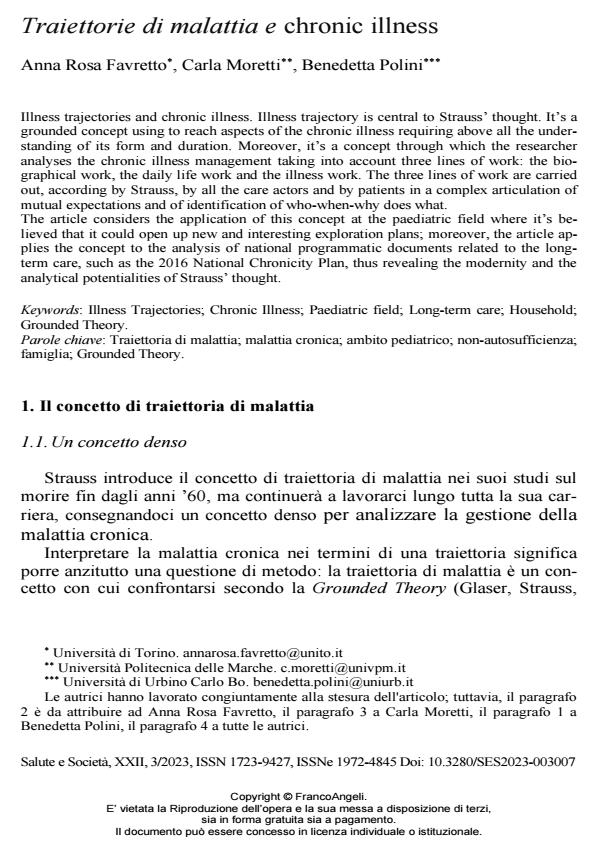Traiettorie di malattia e chronic illness
Journal title SALUTE E SOCIETÀ
Author/s Anna Rosa Favretto, Carla Moretti, Benedetta Polini
Publishing Year 2023 Issue 2023/3
Language Italian Pages 18 P. 100-117 File size 424 KB
DOI 10.3280/SES2023-003007
DOI is like a bar code for intellectual property: to have more infomation
click here
Below, you can see the article first page
If you want to buy this article in PDF format, you can do it, following the instructions to buy download credits

FrancoAngeli is member of Publishers International Linking Association, Inc (PILA), a not-for-profit association which run the CrossRef service enabling links to and from online scholarly content.
Illness trajectories and chronic illness. Illness trajectory is central to Strauss’ thought. It’s a grounded concept using to reach aspects of the chronic illness requiring above all the under-standing of its form and duration. Moreover, it’s a concept through which the researcher anal-yses the chronic illness management taking into account three lines of work: the biographical work, the daily life work and the illness work. The three lines of work are carried out, accord-ing by Strauss, by all the care actors and by patients in a complex articulation of mutual expec-tations and of identification of who-when-why does what. The article considers the application of this concept at the paediatric field where it’s believed that it could open up new and interesting exploration plans; moreover, the article applies the concept to the analysis of national programmatic documents related to the long-term care, such as the 2016 National Chronicity Plan, thus revealing the modernity and the analytical potential-ities of Strauss’ thought.
Keywords: Illness Trajectories; Chronic Illness; Paediatric field; Long-term care; Household; Grounded Theory.
Anna Rosa Favretto, Carla Moretti, Benedetta Polini, Traiettorie di malattia e chronic illness in "SALUTE E SOCIETÀ" 3/2023, pp 100-117, DOI: 10.3280/SES2023-003007